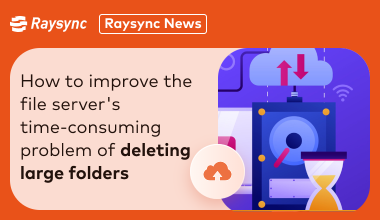How Raysync Helps DCP Movie and TV Post File Transfer
In the ever-evolving landscape of digital cinema and television production, the efficiency and reliability of file transfer solutions are paramount. The need for rapid, secure, and efficient transfer of large digital cinema packages (DCP) files has become increasingly critical as the industry continues to shift towards high-definition formats and complex post-production processes. This backdrop sets the stage for an in-depth exploration of innovative file transfer solutions that cater to the unique demands of DCP film and television post-production workflows.
A Brief Overview of DCP
Digital Cinema Package (DCP) is a collection of digital files used to store and convey digital cinema (DC) audio, image, and data streams. The standard, established by Digital Cinema Initiatives, LLC, ensures high-quality content delivery to cinemas worldwide. DCP files are known for their large sizes, often extending to several terabytes, necessitating efficient transfer mechanisms, especially in post-production stages where time and integrity are of the essence.
Features and Advantages of Raysync Transfer Solution
Raysync offers a comprehensive suite of solutions tailored for various enterprise needs, including Raysync Enterprise, SMB, and Cloud versions, catering to different scales and requirements of DCP file transfer tasks. Its solutions are designed to tackle petabyte-scale and billion-file transfers, ensuring high efficiency in data collaboration and secure file sharing.
-
Accelerated Large File Transfers
For DCP film and television post-production, where files are typically enormous, Raysync's high-speed transfer capability is particularly beneficial. Leveraging a proprietary UDP transfer protocol, Raysync achieves maximum file transfer efficiency, overcoming common transfer limitations related to file sizes, quantities, and network conditions. This technology ensures bandwidth utilization rates surpass 96%, making it a potent tool for handling the voluminous data characteristic of high-definition video content.
-
Enhanced File Synchronization and Security
Raysync ensures real-time and automatic data synchronization, which is crucial for post-production workflows that involve frequent updates and revisions to content. Its peer-to-peer transfer feature allows direct file exchanges between clients, bypassing the server and thereby saving server space while maintaining end-to-end encryption for each file transferred. This approach not only enhances efficiency but also fortifies the security of sensitive DCP content.
-
Simplified Management and Customization
With Raysync, enterprises gain centralized control over global transfer nodes, which is instrumental in managing the dispersed nature of post-production teams. The ability to visualize and automate file transfers, coupled with customizable branding options, empowers organizations to streamline their operations while reinforcing their brand identity.
-
Cross-Platform Compatibility and Integration
Raysync's support for various operating systems and its seamless integration capabilities with existing enterprise systems make it a versatile solution for the film and television industry. By providing SDK and API integration options, Raysync enables a cohesive workflow, allowing for the efficient exchange of DCP files across different platforms and teams, irrespective of geographical boundaries.
Conclusion
Raysync's file transfer solutions offer a robust, secure, and efficient means of handling the large-scale, complex file transfer needs inherent in DCP film and television post-production. Its blend of high-speed transfer capabilities, advanced security measures, and seamless integration options make it an indispensable tool for industry professionals striving to optimize their workflows and safeguard their creative assets.
You might also like

Raysync News
March 22, 2024How to improve the file server's time-consuming problem of deleting large folders
Handling many files or large folders has become a daily task on file servers. To face this problem, Raysync utilizes its innovative file transfer technology to efficiently handle issues such as the deletion of large folders.

Raysync News
November 20, 2022What does MFT Mean?
Managed File Transfer, as the acronym implies, is a service that manages data and ensures its security during transfer. Enterprise organizations often use it, and it can get rid of slow and temporary methods such as FTP and HTTP.

Raysync News
June 28, 2020Raysync Transmission: 5 Types of Data Integration You Need to Know
We have been talking about data integration, but that doesn't mean we all understand it. It seems simple to talk about data integration, but when we explain the definition, we will find many different explanations.